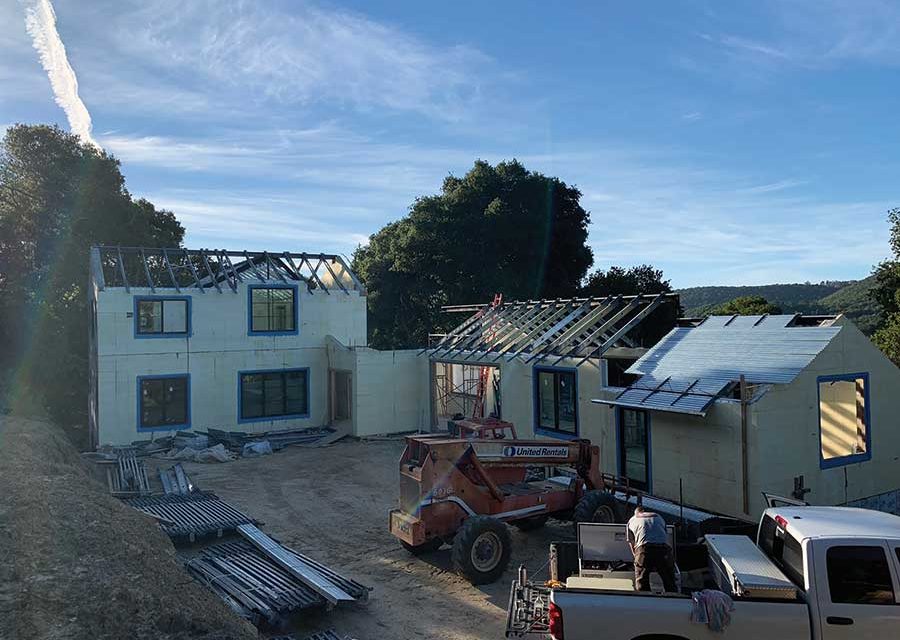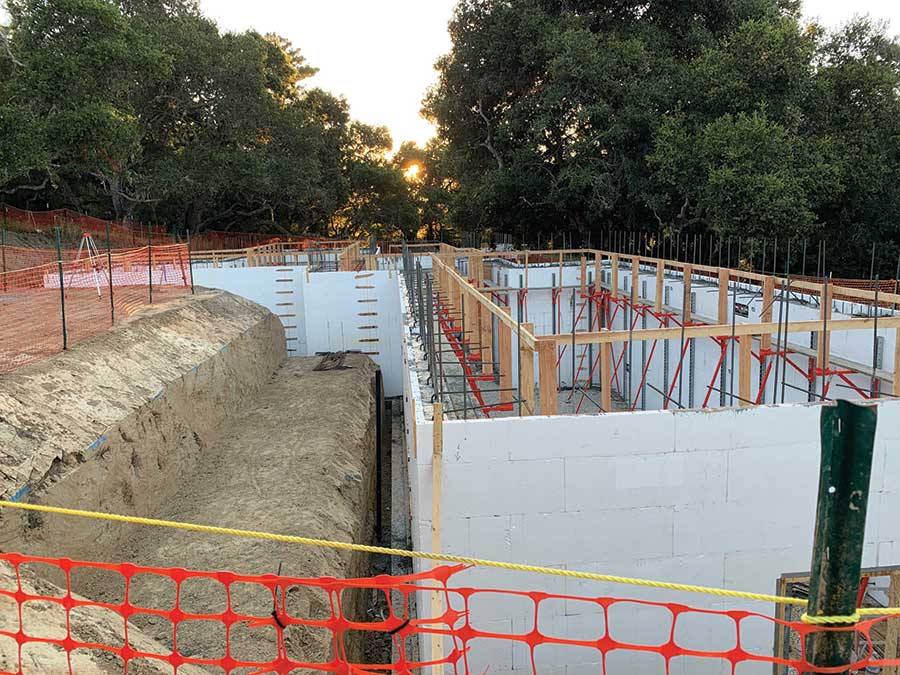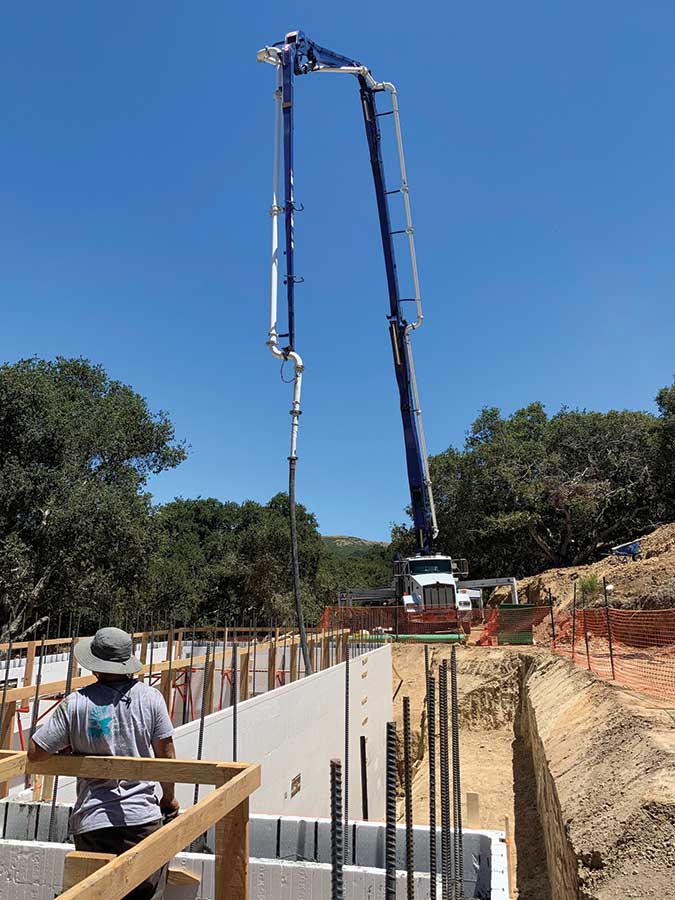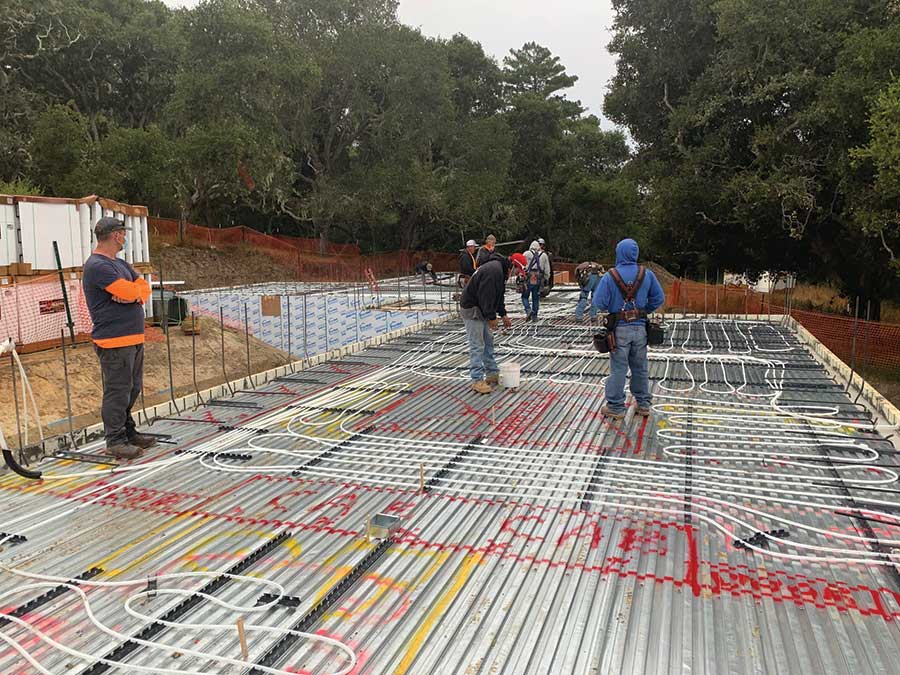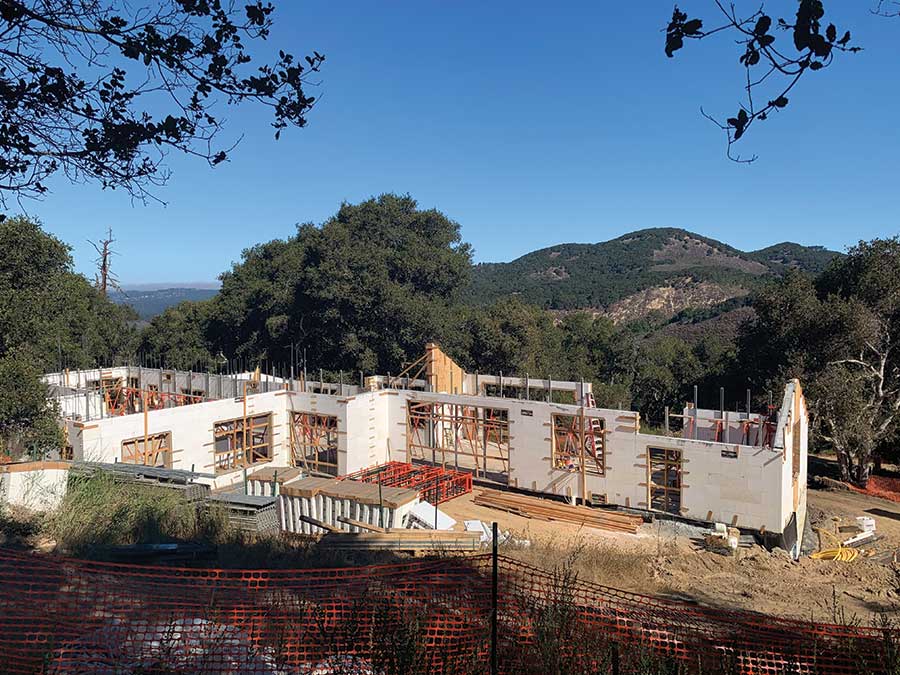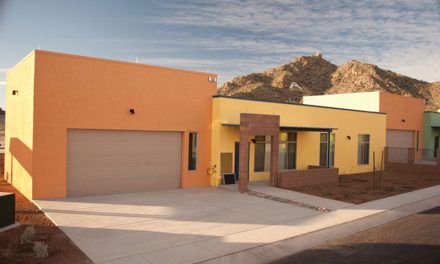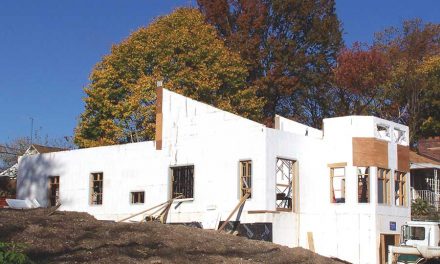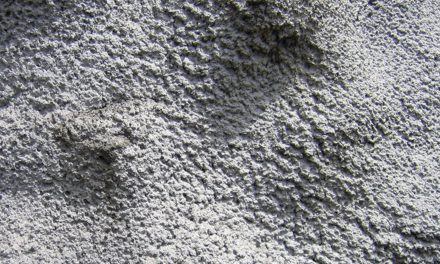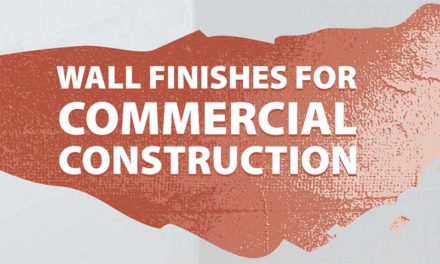Example of non-combustible full building envelope with ICF walls and iSpan floors and roof. A typical ICF basement, already poured.
Having been involved with ICF construction for around 17 years, and in that time having been involved with more than 130 ICF projects, we have heard over and over again the predominant opinion that ICF construction is expensive. However, with the current price escalation of wood products, people are looking more and more at other building solutions, so they can proceed with their projects, and yet still be able to make them affordable. With the current price levels and difficult availability of wood products such as OSB, plywood, I joists, etc, there is a strong argument that ICF construction is currently the less expensive building method, so what better time than to consider ICF for a residential, or commercial project?
At Dave Gowers Engineering, hardly a week goes by when we don’t receive an inquiry to convert an already designed wood frame structure to ICF, and that leads to a variety of questions concerning the viability of such a change.
The Essential Differences
There are basic differences between wood frame construction and ICF construction, some obvious, but some not so obvious. The following is a check list of some of those differences:
- A 6-inch concrete core is approximately 10X stronger than wood shearing, and that is huge. This allows more adventurous architectural design, affording the flexibility of more and/or larger openings, and also placing openings where wood framing would make that very difficult.
- As we have seen over the past several months, wood products have escalated in price almost exponentially. In the same period, ICF foam products have only increased around 6-7%, and concrete costs have risen by the same order. Rebar prices have escalated more, but fortunately these represent a small percentage of the overall ICF installation.
- Current building code requires R-21 for a wall assembly, so a wood frame is built with 2×6 framing to allow 6-inch
batting to be installed. However, if the true R-value of a
wood frame wall is calculated, allowing for a stud at 16-inch on center spacing, the thermal bridging created by the interfering studs results in a wall assembly closer to R-17. By contrast, a continuous concrete core with a minimum of 5 inches of EPS foam calculates at close to R-22. The only thermal bridging occurs at openings, and only if wood bucks are used. Using foam bucks, even that thermal bridging
is eliminated. - The elimination of thermal bridging is a major factor in the true performance R-value of an ICF wall. However, the thermal mass of the concrete contributes significantly to the ICF wall performance, frequently achieving a performance R-value upwards of R-40!
- Naturally, this superior thermal performance leads to huge energy savings. It is not uncommon for homeowners to achieve 60% energy savings in an ICF house, compared to those achieved in a code compliant wood frame house. An illustration of this can be summed up by a comment made by a client who recently moved into his newly constructed ICF house in Grants Pass, Oregon. He said, “Checked the outside temp today in the late afternoon,104 degrees, but inside it was only 76 degrees. We have no air conditioning running; it’s all ICF and opening the windows at night and closing them in the morning. Great stuff!”
- Using a 6-inch concrete core, the resulting wall will be approximately 11 inches thick. This is approximately twice the thickness of a wood framed wall, and provides a convenient opportunity to introduce window seats and other attractive architectural features.
- We all know wood has longevity problems; dry rot, wet rot, termites, etc, etc. None of those problems occur with ICF construction, as it’s built from reinforced concrete, which is encapsulated in non-combustible EPS foam.
- A significant benefit of ICF construction is the quietness of the enclosed living space. Noise from wind, traffic, rain, airplanes, and even neighbors is virtually eliminated. Frequently, when sitting inside an ICF house with a raging wind outside, the only way to tell that the wind is blowing is the bending of the trees.
Speed of Construction
There is no doubt that ICF construction is faster than wood framing. As an example, a contractor placing ICF for the first time on a project in Cave Junction, Oregon, was able to place a 2700 square-foot single story footprint in just 11 days from start to pour. This included installing all the required wall bracing, bucking, and bracing all the window and door openings, and all the other prep work necessary to get to pour point. And this was with a four-man crew. He was very pleased with the simplicity of the installation, and is now a confirmed ICF convert!
Added Security
We have seen over and over again in recent years where whole communities have been ravaged and destroyed by fire. Santa Rosa in California, Paradise in California, and just last year, Phoenix and Talent in Oregon are just a few. Whilst nothing can be called absolutely fireproof, without a doubt ICF construction is non-combustible. When experiencing a total loss occasioned by fire, the homeowner is devastated by not just the loss of the structure, but probably more so by the irreplaceable loss of the contents; the family pictures and videos, maybe a special memento that was placed proudly for all to see, the contents of a cedar chest— the list goes on. At the very least, when an ICF structure is confronted with a fire, it has a much greater chance of withstanding that fire and protecting those precious contents.
Fire may not be the issue—maybe it’s earthquakes, tornados, or hurricanes. Again, due to the incredible strength, an ICF structure rarely succumbs to these natural disasters, and protects both the contents and the inhabitants.
And quite literally, ICF construction is bullet proof! Six inches of reinforced concrete affords a virtually unequalled protection to gunfire attack. Whilst that may not be important to many, there are some locations and applications where this is of paramount importance, and provides a very cost effective solution to that localized problem
Better Living Environment
The peace of mind living within an ICF home has itself a cost saving element. Minimal maintenance, reduced stress, reduced utility bills—all these factors lead to a calmer viewpoint for the homeowner. With mortgage interest rates currently at an all-time low, and wood based construction products at an all-time high, it’s little wonder many homeowners are now considering ICF construction in lieu of conventional wood framing.
Conclusion
The net result of all the above is that in both the short term and the long term, ICF construction saves the homeowner money. Right now, money can be saved in the primary building cost. But in addition, the operating cost of an ICF house is also substantially less, leading to very long term cost savings. Taking all the above into consideration, this is a great time to consider ICF construction for an upcoming residential or commercial building project.
Dave Gowers
After graduating from London University in the UK more than 50 years ago, Dave Gowers gained extensive experience in concrete construction. He has been involved with a diversity of commercial, residential, and industrial projects, up to $1 billion in value, in 15 different countries. Dave has extensive experience with concrete formwork and shoring systems, and over the past 17 years, has produced structural design solutions for more than 130 ICF projects. Dave resides in Southern Oregon with his wife and business partner, Jennifer. Dave holds a PE license in 13 states/territories.

